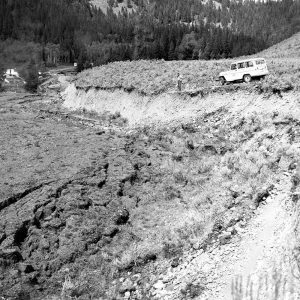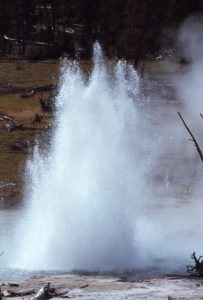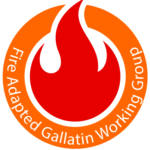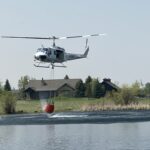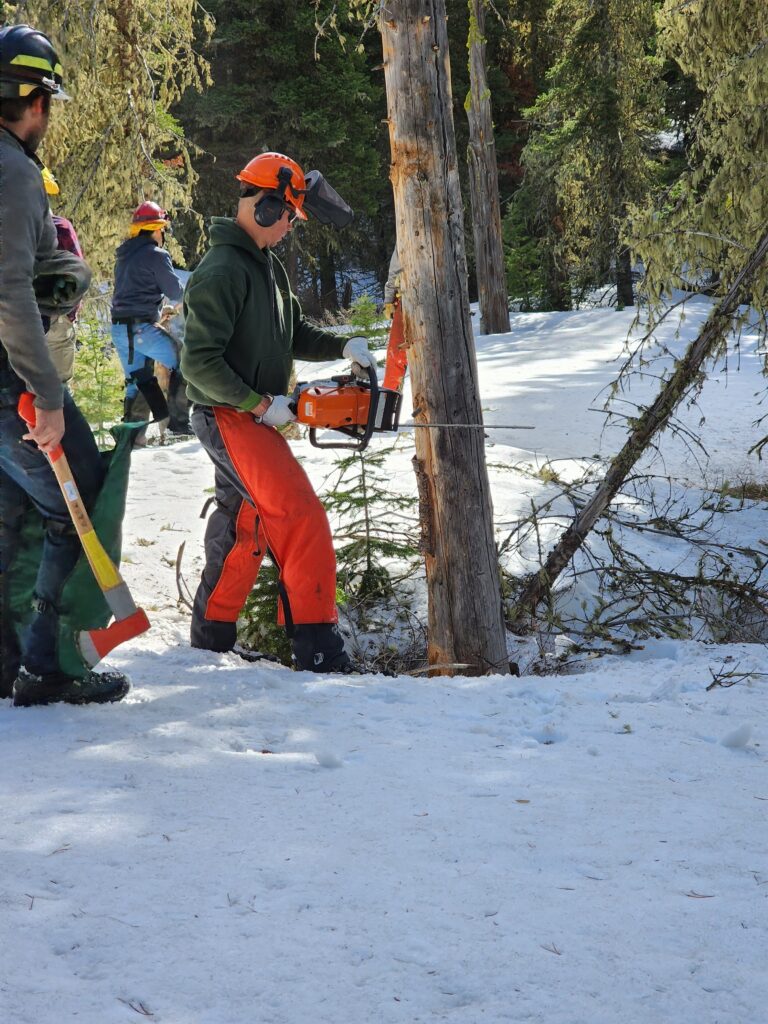60 years since the 1959 M7.3 Hebgen Lake earthquake: its history and effects on the Yellowstone region
Yellowstone Caldera Chronicles is a weekly column written by scientists and collaborators of the Yellowstone Volcano Observatory. This week’s contribution is from Jamie Farrell, assistant research professor with the University of Utah Seismograph Stations and Chief Seismologist of the Yellowstone Volcano Observatory.
We often hear about the potential for large volcanic eruptions of the Yellowstone volcano in the news and on television shows. However, we rarely focus on the threat of large earthquakes in the region, even though the hazard and risk from these types of events is much larger than a volcanic eruption because they happen so much more frequently.
As we approach the 60th anniversary of the M7.3 Hebgen Lake earthquake, which occurred on August 17th, 1959 at 11:37 PM (MST), it seems appropriate to discuss the effects of the earthquake on the region, and what we might expect if a similar sized event happens in the near future.
First, let’s talk about the earthquake itself. The official magnitude of the earthquake is 7.3, and it was located just outside the western boundary of Yellowstone National Park, ~6.5 miles WNW of West Yellowstone, Montana. The earthquake caused 28 fatalities, with most of those as a result of a large landslide that was triggered in the Madison Canyon. That landslide carried ~50 million cubic yards of rock, mud, and debris down the south side of the canyon and half way up the north side, partially burying the Rock Creek campground on the valley floor. The landslide also dammed the Madison River, causing water to back up behind it creating EarthquakeLake.
The earthquake caused up to ~18-20 feet of offset on the surface (fault scarps) that can still be seen today on both the Hebgen Lake and Red Canyon faults and, to a lesser extent, the Madison fault. Within nearby Yellowstone National Park, many rock slides blocked the roadways, and there was damage to the world famous Old Faithful Inn, where a large rock chimney collapsed.
But maybe even more spectacular were the effects of the earthquake on the hydrothermal features in Yellowstone National Park. By the day after the earthquake, at least 289 springs in the geyser basins of the Firehole River had erupted as geysers; of these, 160 were springs with no previous record of eruption. At least 590 springs had become turbid. During the first few days after the earthquake, most springs began to clear, but several years passed before clearing was generally complete. In addition, new hot ground soon developed in some places and this became more apparent by the following spring with the formation of new fractures in sinter and linear zones of dead or dying trees. Some new fractures developed locally into fumaroles, and a few of these evolved into hot springs or geysers.

Rockslide damage to the Golden Gate area near Mammoth Hot Springs, Yellowstone National Park, as a result of the 1959 Hebgen Lake earthquake. (Public domain.)
Two of the most spectacular changes were the formation of Seismic Geyser and the changes to Sapphire Pool. Seismic geyser (located in the Upper Geyser Basin) started out as a newly formed fracture after the Hebgen Lake earthquake. The fracture slowly evolved into a fumarole, and in about 2.5 years it evolved into a small geyser. A few years later, it had changed into a very vigorous geyser that erupted to heights up to 50 feet and excavated a vent with a maximum diameter of ~40 feet and more than 20 feet deep. In 1971, major eruptions ceased at Seismic geyser as activity shifted to a new, small, satellite crater that formed nearby.
Prior to the Hebgen Lake earthquake, Sapphire Pool (located in Biscuit Basin) erupted about every 17 to 20 minutes to a height of 3 to 6 feet. Following the quake, and until September 5, it surged 6 to 8 feet high constantly. On September 5, its steady boiling and surging became periodic, and the spring changed into a major geyser. Its eruptions were quite regular, occurring about every 2 hours, and were massive and spectacular; some of the bursts were 150 feet high and 200 feet across! From September 14 to 29 it reverted to a steadily surging cauldron. On September 29 it again became a major geyser, and this activity persisted until 1968. Sapphire pool today is still a crystal-clear, blue-water pool, and it still violently boils and surges on occasion.
For the first few days after the earthquake, Old Faithful was observed to be more erratic than usual, with successive longer and shorter intervals between eruptions, but that had been observed prior to the earthquake as well. The average eruption interval the summer prior to the earthquake was 61.8 minutes—the shortest seasonal average on record. By September 1 it had increased to 62.1 minutes. Two hundred and fifty-five eruption intervals timed during the last 10 days of December showed an average interval of 67.4 minutes. Old Faithful’s eruption interval has continued to increase since that time and is now averaging ~93 minutes. Was this a direct result of the Hebgen Lake earthquake?
The Hebgen Lake earthquake continues to be the largest earthquake to occur in the U.S. Intermountain West in historic times. As we approach the 60th anniversary of this event, we should remind ourselves that the area around Yellowstone (and much of the Western U.S.) is earthquake country. Earthquakes happen nearly every day in the region, and occasionally the area produces strong earthquakes that are capable of affecting large areas and causing damage. We should expect similar effects if another earthquake of this size would to happen today, except there are many more people visiting the area today than there were in the summer of 1959. The more we are prepared for earthquakes, the better we will be after one happens.
To commemorate the 60th anniversary of the Hebgen Lake earthquake, the Earthquake Lake Visitor Center operated by the U.S. Forest Service, will be hosting a number of events leading up to August 17th, including several public lectures. The schedule can be viewed here.

